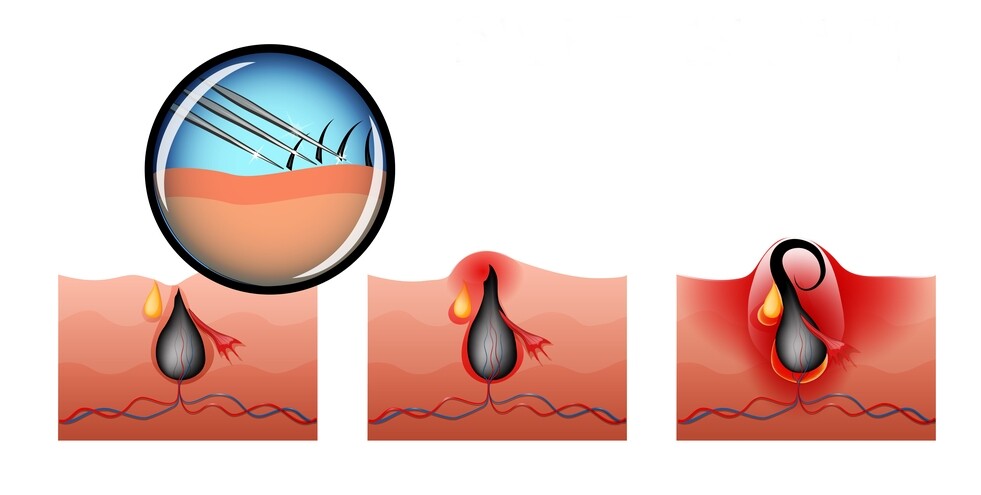They itch, hurt and look unattractive: ingrown hair. But how can you prevent them and what helps once they are there? And can they really lead to blood poisoning?
An ingrown hair is one of those aches and pains that can quickly become a problem. Because: it can itch, hurt and on top of that it looks very unattractive. Especially in summer, when women shave almost every day, their hair can become inflamed. But why is this actually so and what is the best thing to do then? To answer these questions, we had dermatologist Dr. Sabine Zenker from Munich explain to us how hair does not grow in at all, and got tips on what to do if it does happen.
Ingrown hair: These are the causes
“Ingrown hair is hair that curls and grows into the skin instead of out of it,” explains Dr. Sabine Zenker. “This causes pimple-like inflammation, which can be itchy and painful.” This is why this problem occurs mainly in people who have thick, curly and unruly hair. It tends to curl back into the skin.
The problem usually arises after hair removal, the so-called shaving spots. Because: If the hair on legs, arms, etc. has been shaved or epilated, the hair that grows back has a “sharper edge”. This makes it easier for it to penetrate the skin in the wrong direction, get stuck under the surface of the skin and then continue growing. Another possibility of ingrown hairs can be dead skin cells that clog the hair root, forcing the hair that is inside to grow sideways under the skin instead of out upwards.
Are some people more affected than others?
Unfortunately yes! Dr. Zenker explains: “Ingrown hair is most common in people who have thick, curly or unruly hair. Rather than fine, straight hair, it tends to curl in a way that makes it grow into the skin.
Are there certain parts of the body that tend to have ingrown hairs?
Due to shaving, there are some areas of the body that are more frequently affected by ingrown hairs than others, for example the armpit area or the pubic area. “In men, the cheeks, chin and neck may also be affected.”
Ingrown hair: How to prevent it
The best way to prevent ingrown hair is to let it grow easily. “No more shaving, plucking or epilating is the best way to prevent ingrown hairs,” says Dr. Zenker. If you still don’t want to do without it, you should consider the following when removing hair: “Before hair removal, treat the skin with peelings to prevent pores from clogging. Then remove the hair in the direction of growth.
After peeling and shaving, apply a moisturising lotion to the skin to allow the hair to grow out of the pores. If you want to solve the problem in the long term, Dr. Zenker recommends permanent hair removal by laser.
The hair has already grown in: What now?
“If the areas are unattractive and do not disturb aesthetically, you can leave the ingrown hair alone.” But if there’s an inflammation or even an abscess, it’s, “Hands off and see a doctor!”
“The dermatologist can make a small incision in the skin with a sterile needle or scalpel to remove the ingrown hairs from the skin,” explains Dr. Zenker. Drugs with anti-inflammatory effects (cortisone) or antibiotic creams are also prescribed. Dr. Zenker’s extra tip for removing dead skin cells and thus removing ingrown hairs: medical peelings.
The incorrect handling of ingrown hair: Could it cause sepsis?
There are often rumours that ingrown hairs can lead to blood poisoning (sepsis) in the worst case. This is rather unlikely in most cases. In general, however, the following applies: Caution is required in the case of furuncles on the skin. These are inflamed, reddened and pressure-painful lumps, often with a pus plug in the middle. These may have to be opened by a doctor, in the best case they open by themselves and drain off.
Never try to open them yourself or to initiate other treatment steps. Incorrect handling can lead to life-threatening blood poisoning. It is particularly dangerous in the lip, nose and cheek area. Via the bloodstream around the nose area, bacteria can quickly enter the brain and cause infections.

